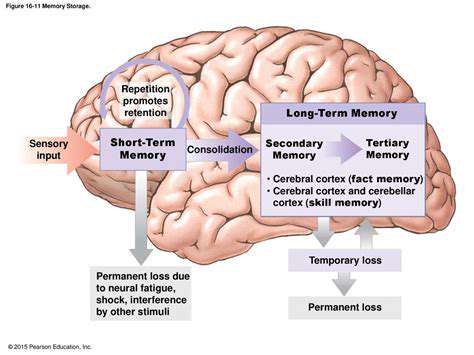Guide to Recognizing Signs of Pet Dementia
Environmental Changes and Wandering
Environmental Changes and the Wandering Behavior
Environmental changes can significantly impact a pet's behavior, often triggering or exacerbating wandering tendencies. A familiar environment provides comfort and security, but alterations such as new furniture, renovations, or even the introduction of a new pet can lead to disorientation and anxiety. These feelings can manifest as increased restlessness and a desire to explore unfamiliar territories, potentially leading to wandering episodes. Understanding the impact of environmental factors is crucial for recognizing the signs of pet dementia and developing appropriate coping strategies.
Loss of Familiar Landmarks
The familiar landmarks and cues that a pet relies on to navigate their environment can be altered or lost. A pet used to recognizing specific smells, sounds, or visual cues associated with their home may become disoriented when these cues are changed, leading to a desire to explore and potentially wander. For example, a dog used to recognizing a specific tree in the yard as a landmark may become confused if the tree is removed or significantly altered.
This disorientation is particularly challenging for senior pets who have relied on these familiar cues for years. The loss of these landmarks can contribute to anxiety and a desire to wander in search of the familiar.
Changes in Daily Routines
Significant shifts in daily routines, such as changes in feeding times, exercise schedules, or the presence of other people in the home, can disrupt a pet's established patterns and sense of security. These disruptions can trigger a desire to wander as the pet seeks to understand and adjust to the new routine. The uncertainty and lack of predictability can be particularly distressing for pets with cognitive decline.
Sensory Overload or Deprivation
Changes in sensory input, such as loud noises, unfamiliar smells, or a lack of visual stimulation, can also contribute to wandering. Loud noises, such as construction work or fireworks, can overwhelm a pet's senses and induce stress, potentially leading to an urge to escape the environment. Conversely, a lack of visual stimulation, such as a lack of windows or outdoor access, can lead to disorientation and a desire to explore.
Stress and Anxiety
Stress and anxiety are common triggers for wandering behavior in pets, particularly those with cognitive decline. Stress can be caused by numerous factors, including changes in the environment, the presence of other pets or people, or even medical issues. Recognizing the signs of stress, such as panting, restlessness, or vocalization, is essential for addressing the underlying cause and potentially reducing the urge to wander.
Discomfort or Medical Issues
Physical discomfort or underlying medical issues can also contribute to wandering behavior in pets. Pain, arthritis, or other conditions can cause discomfort and restlessness, leading to a desire to explore or escape the perceived discomfort. It's crucial to rule out any medical causes for wandering behavior before focusing solely on cognitive decline. A veterinary examination can help determine if underlying medical issues are contributing to the wandering.
Social Interactions and Isolation
Social interactions and isolation play a significant role in a pet's overall well-being and can impact wandering behavior. A pet that feels isolated or neglected may wander in search of companionship or attention. Conversely, changes in social dynamics, such as the presence of a new pet or the absence of a familiar companion, can cause stress and anxiety, leading to wandering behavior. Maintaining a stable and supportive social environment is vital for managing wandering in pets.

Read more about Guide to Recognizing Signs of Pet Dementia
Hot Recommendations
- Review: [Specific Brand] Small Animal Cage
- Why Rescuing Pets Saves Lives
- Best Pet First Aid Kits [What to Include]
- How to Help Stray Animals in Your Community
- Guide to Adopting a Pet When You Have Kids
- Top Reptile Heat Lamps
- Heartwarming Rescue Stories That Will Inspire You
- Review: [Specific Brand] Bird Cage
- Best Aquarium Filters [2025 Review]
- Review: [Specific Brand] Smart Litter Box







![My Pet's Favorite Nap Spots [Story]](/static/images/33/2025-07/CreatingaNap-WorthyOasisforYourBelovedCompanion.jpg)

![Review: [Specific Brand] Smart Litter Box](/static/images/33/2025-07/EaseofUseandSetup3AAUser-FriendlyExperience3F.jpg)
![Best Aquarium Filters [2025 Review]](/static/images/33/2025-07/MaintenanceandTroubleshooting3AKeepingYourFilterinTopCondition.jpg)
